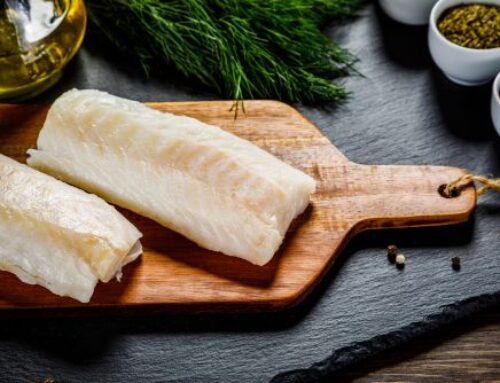If you’re looking to embrace a more healthful lifestyle, incorporating more seafood into your diet is a great place to start. From king salmon to canned sardines, fish and other forms of seafood provide essential vitamins, minerals, and fatty acids that help your body function at its best. Halibut is rich in nutrients while providing a mild, versatile flavor.
But what’s so special about halibut, really? Why choose this fish over others for a regular seafood dinner? Read on for a few things to know about this delicious flatfish.
How Does It Taste?
Halibut flesh has a mild, slightly sweet taste without that “fishy” flavor. It’s not too flavor-forward on its own, so it pairs well with all kinds of marinades, sauces, and sides. Halibut is a great fish for kids, picky eaters, or folks who don’t think they enjoy seafood.
Where Is It Found?
Varieties of halibut exist in both the Pacific and Atlantic Oceans. Atlantic halibut are concentrated largely around Greenland and Iceland, as well as the Gulf of Maine and all the way down to Virginia.
Meanwhile, the Pacific halibut’s habitat stretches from Hokkaido, Japan, to Alaska. Fishers catch most Alaskan halibut in the wild and flash freeze them on the boat. It’s some of the healthiest, tastiest halibut available.
What Are the Health Benefits?
Halibut is extremely high in protein, which your body needs for long-term energy. It’s also rich in selenium, which has antioxidant properties that promote cellular health.
Don’t forget about the omega-3s, either! One thing that makes Alaskan halibut especially beneficial for your health is its concentration of fatty acids, which boost brain health and delay the onset of age-related cognitive concerns.
Is Wild the Same As Farmed?
In order to discourage the overfishing of wild halibut, commercial fisheries operate halibut farms in Iceland, Norway, Canada, and the UK. Halibut is widely accessible to many people, thanks in part to farms.
Many people assume wild-caught halibut to be healthier and tastier than its farmed counterpart. While that assumption does have some basis in truth, the difference isn’t immediately noticeable to the consumer; both still have that mild taste and white flesh.
Tip:
The main difference to be aware of is the chance of bacteria or parasites in the meat—farmed halibut live in smaller habitats and are more likely to encounter these issues.
Now that you know what’s so special about halibut, take the things you know with you to the grocery store or fish market. Let these facts inspire you to add more healthy seafood to your diet!





Leave A Comment